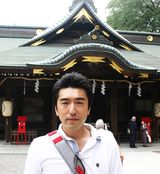"The cultural roots of Japanese New Year
- 2024/01/10 22:22

"The cultural roots of Japanese New Year

"It's finally the season of December. New Year's, among Japan's annual events, is a particularly culturally rich time. But have you ever wondered why we celebrate the New Year in Japan? The answer may not readily come to mind because celebrating the New Year has become a common and expected practice. However, each of these events has a well-founded reason.
So, let's talk about Japan's New Year. The cultural roots of Japan's annual events, especially holidays, lie in two major themes: Shinto and agriculture. Essentially, Japanese holidays were determined based on agricultural harvests, and festivities were organized accordingly, aligning with these rituals. Well, during the Edo period, nearly 80% of the population engaged in agriculture, so it's somewhat natural. The same rule applies to New Year's festivities.
Originally, Japan's New Year was meant to welcome the deity called O-Toshigami, the god of agriculture, into our homes. This was a time to express gratitude for the abundant harvest of the past year while praying for a prosperous year ahead. Therefore, O-Toshigami would appear at sunrise and be invited into our homes. This is why we set up Kadomatsu, decorate with ornaments and Kagami-mochi. All of these decorations are put up to welcome O-Toshigami into our homes. The year-end cleaning is also done because gods won't visit unclean places, ensuring our homes are clean.
However, in recent times, much of the original meaning has been forgotten. Nowadays, many people go for their first shrine visit (Hatsumode) on New Year's Day. But since O-Toshigami is supposed to be welcomed into our homes on that day, it's considered somewhat disrespectful to be absent. Therefore, traditionally, Hatsumode was supposed to be done on days other than New Year's Day. Most people might not be aware of this. This year, perhaps pay attention to these details and experience a more traditional Japanese New Year."

(Shrine Person Operator, Representative of Culture J, Ltd., Hidetoshi Tojo)
Hidetoshi Tojo was born in 1972 in Saitama Prefecture and is the representative director of Culture J, Ltd. He is the direct descendant of Hideki Tojo and the 18th head of the family. Exploring a unique social welfare model in Japan, he turned his attention to the presence of shrines and Shinto. Advocating for cultural tourism through shrines, he aims to revitalize new local communities and cultural entertainment.
1: "What is True Culture? Understanding Japan"
2: Real Meaning of Foundation Day of Japan as a Nation
3: There is a great leap forward after overcoming a crisis.
4: Let's return to the spirit of "Mottainai"!
5: "Understanding Japan's Obon Festival"
6: "The Pink Book for Fulfilling the Whims of Adult Women"
7: "The cultural roots of Japanese New Year
8:Rekindling the Spirit of Herbivore Men Through Taiko Drumming?
9: "Publishing 'Proof of Japanese Identity' - Column by Hidetoshi Tojo, No. 10"
10: "Publishing 'Proof of the Japanese' - Part 2 - Hidetoshi Tojo's Serial Column No. 11"
11: "For the Japanese, What Does 'Work' Mean? - Hidetoshi Tojo's Serial Column No. 12"
12: Learn from the keen insights of our predecessors – Hidetoshi Tojo's Column No.13
13: Japanese Language Quirks: Logographic and Phonetic Characters
14: "What Does 'Shikinen Sengu' Mean to the Japanese? - Hidetoshi Tōjō's Column No. 15"
15: Cultivation Required in a Global Society? - Column by Hidetoshi Tojo, No.16"
16: "Publication of 'Shrine Tourism'!! Hidetoshi Tojo's Serial Column No. 17"